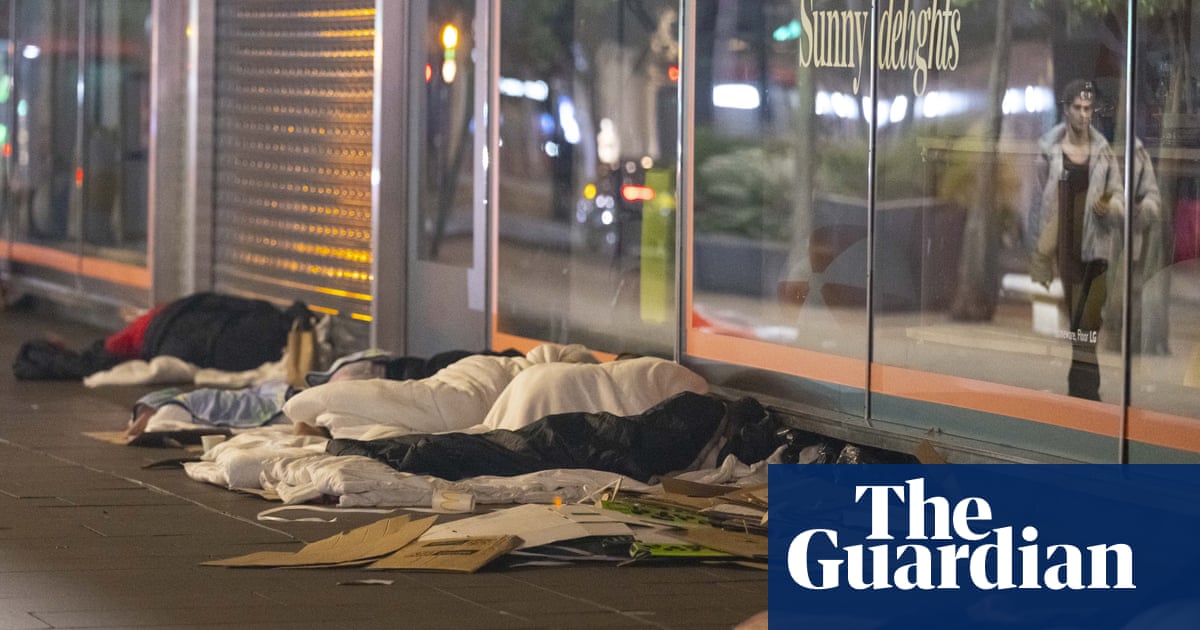
Almost 1 million people are homeless on any given night across Europe, a new report has estimated.
Feantsa, the Federation of National Organisations Working with the Homeless, said the figure, which only reflects the “most visible forms” of homelessness, “highlights the failure of European countries to make housing a fundamental right”.
It estimated that at least 895,000 people are homeless each night – “a population comparable to that of a city like Marseille or Turin”.
The data collected from EU countries and the UK ranges from census records to local authority figures and is a “minimum estimate”, as figures were not available for all six categories that the authors of the report used to define homelessness.
These categories include those sleeping rough, people in emergency accommodation, and “homeless people living temporarily in conventional housing with family and friends”.
The last category will resonate for many in countries like Ireland, where housing has hit crisis levels, leaving working families evicted and having to live with family or friends.
Freek Spinnewijn, Feantsa’s director, said: “Most governments in Europe continue to fail homeless people, frustrate the general public, and waste resources on ineffectively managing the problem.”
All the EU’s member states pledged last year to work to deliver on the fight against homelessness by 2030. However, the report said the problem was worsening, with only Finland and Denmark making demonstrable progress.
In Denmark homelessness fell by 10% between 2019 and 2022, which the report’s authors said shows it is “one of the countries making clear progress” and could be a model for others.
The Danish Centre for Social Science carries out a national survey on homelessness every two years, collecting data on every person with whom the local authorities are in contact.
“A paradigm shift away from managing homelessness in the shelter system to solving homelessness by providing housing is important progress – even if that does not lead to zero homeless people in the short-term,” the authors said in the report, titled the 8th Overview of Housing Exclusion in Europe.
They said the reduction in Denmark was “very likely” to be a result of the national policy to combat homelessness as part of a “housing first” strategy, which improves capacity at accommodation centres and runs prevention policies targeting those aged under 24 in major cities.
In Germany, official census data puts the number of homeless people at 262,645, Spain recorded just over 28,500 for the same year, while Ireland, where a lack of housing across the social divide is threatening the government’s re-election prospects, the official number of people in emergency accommodation was put at 11,632 at the end of 2022.
The number of those seeking accommodation services in Ireland has increased by 40% in two years, the report said.
“To Ireland we would say, ‘Fix your dysfunctional housing market,’ and to Germany, ‘Make sure the national homeless strategy which is to be launched soon includes the objective to end homelessness and comes with sufficient budgetary resources,’” it added.
Feantsa also looked at poor-quality housing and found that significant numbers of people in the UK, France, Bulgaria and Hungary were living in homes deemed substandard and unfit for living. Across the EU, it called for greater awareness of the numbers of people housed in “dilapidated” properties with damp and mould, overcrowding, inadequate sanitation and fire risks, which were the “daily reality for millions of people”.
Hungary was singled out for substandard accommodation, with almost half the population “living in overcrowded housing”, while one in eight families in Bulgaria were living in accommodation without an indoor toilet.
Unfit housing was not just the preserve of eastern Europe, however. The authors found that in 2020, almost a fifth of the population of France were living in housing considered unfit for living, while almost a quarter of those in rented housing in the UK were classified in the same category.
Substandard housing was not always the fault of municipal authorities or unscrupulous landlords. “Unfit living conditions also affect countless owner-occupiers who do not have the resources to maintain or renovate their homes,” the report said.
According to the official EU data office, Eurostat, almost 20 million people across the bloc were suffering some form of “housing deprivation” in 2020.
“This refers to the percentage of people living in overcrowded housing which has at least one of the following criteria: households with a leaking roof, with no bath/shower and no indoor toilet, or dwellings considered too dark,” the report said.












